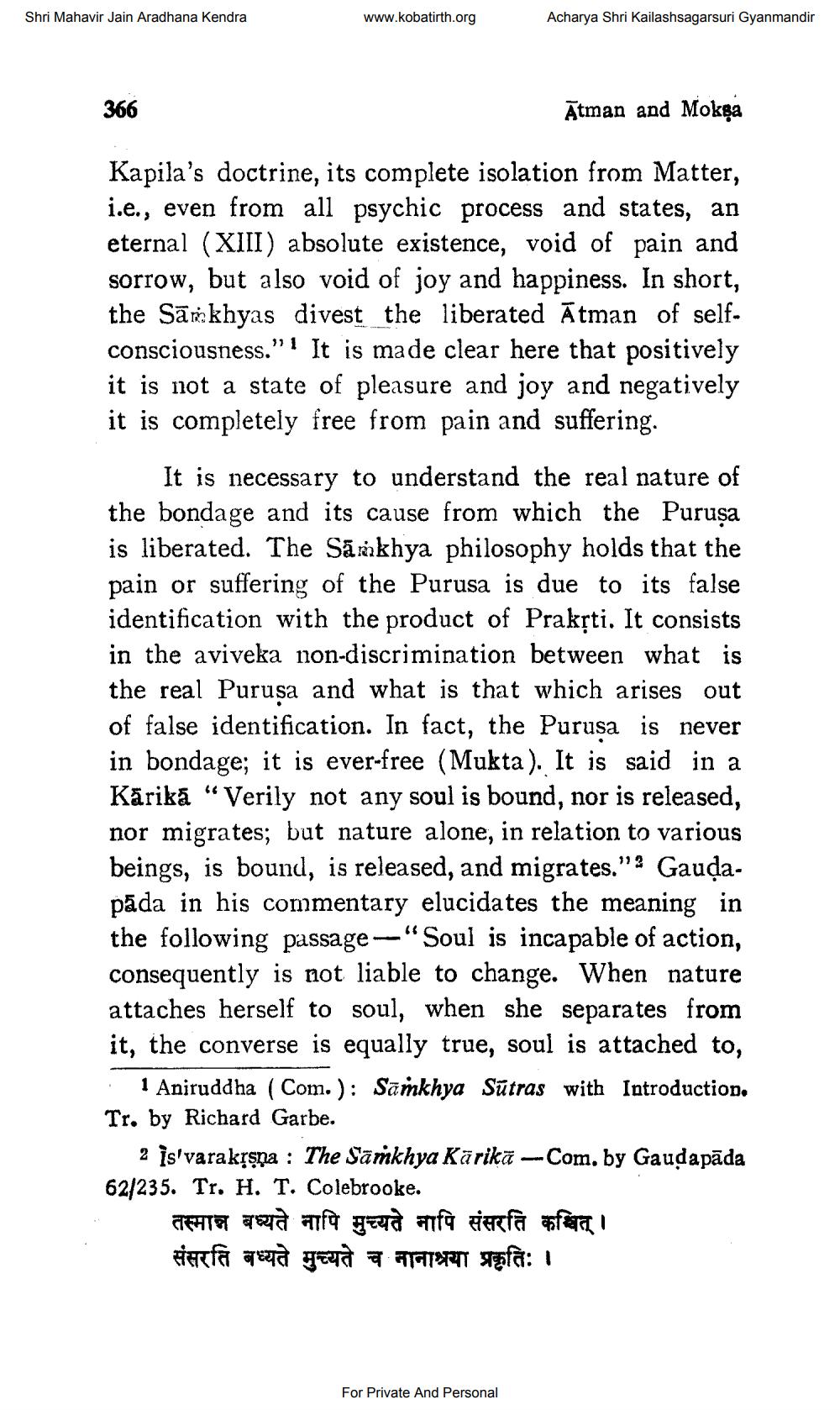________________
Shri Mahavir Jain Aradhana Kendra
www.kobatirth.org
Acharya Shri Kailashsagarsuri Gyanmandir
366
Ātman and Mokea
Kapila's doctrine, its complete isolation from Matter, i.e., even from all psychic process and states, an eternal (XIII) absolute existence, void of pain and sorrow, but also void of joy and happiness. In short, the Sām khyas divest the liberated Ātman of selfconsciousness."! It is made clear here that positively it is not a state of pleasure and joy and negatively it is completely free from pain and suffering.
It is necessary to understand the real nature of the bondage and its cause from which the Purusa is liberated. The Samkhya philosophy holds that the pain or suffering of the Purusa is due to its false identification with the product of Prakřti. It consists in the aviveka non-discrimination between what is the real Purusa and what is that which arises out of false identification. In fact, the Purusa is never in bondage; it is ever-free (Mukta). It is said in a Kárikā “Verily not any soul is bound, nor is released, nor migrates; but nature alone, in relation to various beings, is bound, is released, and migrates."? Gaudapāda in his commentary elucidates the meaning in the following passage-"Soul is incapable of action, consequently is not liable to change. When nature attaches herself to soul, when she separates from it, the converse is equally true, soul is attached to, · 1 Aniruddha ( Com.): Samkhya Sūtras with Introduction. Tr. by Richard Garbe.
2 Is varakļšņa : The Samkhya Karikā ---Com. by Gaudapāda 62/235. Tr. H. T. Colebrooke.
तस्मान बध्यते नापि मुच्यते नापि संसरति कश्चित् । संसरति बध्यते मुच्यते च नानाश्रया प्रकृतिः ।
For Private And Personal




